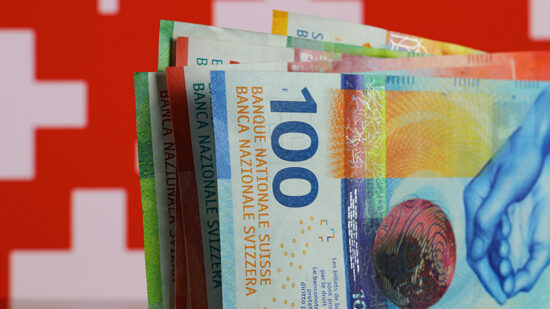Investor confidence in European ETFs has taken a hit during the coronavirus sell-off with funds seeing higher redemptions than their “darkest days” during the global financial crisis.
This month marks two milestones for the European industry with the listing 20 years ago of the first ETFs in the region.
On 28 April 2000, the iShares FTSE 100 ETF listed on the London Stock Exchange shortly after Merrill Lynch launched the Dow Jones Euro STOXX 50 and Dow Jones Euro STOXX 50 LDRS ETFs on the Deutsche Börse on 11 April.
But the anniversaries have been overshadowed by the sector’s record outflows amid the coronavirus downturn.
The European ETF market suffered its highest outflows ever in March with investors yanking €21.4bn (£18.6bn) from funds, according to Morningstar.
Last month’s redemptions were more than double the sector’s previous negative record of €8.3bn in August 2019 when rising trade tensions between the US and China prompted investors to bolt from global equity markets.
‘We haven’t seen figures like these even in the darkest days of the global financial crisis’
For an industry that has enjoyed almost uninterrupted monthly net inflows for the past two decades, the sharp reversal in sentiment is “staggering,” says Jose Garcia-Zarate, associate director of passive strategies research at Morningstar.
“We haven’t seen figures like these even in the darkest days of the global financial crisis of 2008 or during the height of the eurozone debt crisis,” he says.
After factoring in redemptions and negative market moves, European-listed ETFs assets took a record 13% tumble from €899bn to €781bn in March.
“In one fell swoop, assets in European ETFs have dropped to the levels of June 2019,” Garcia-Zarate continues. “This is quite a change from the start of 2020 when we all were placing bets on when ETFs in Europe would hit the €1trn mark.”
Investors less confident in European ETFs than bigger US rivals
European listed ETFs were the outliers last month as global ETFs ended the period with net inflows. Data from ETFGI shows ETFs and ETPs attracted $20.4bn last month though total assets invested globally fell 11% from $6.0trn to $5.4trn in the month to the end of March.
ETFGI managing partner and founder Deborah Fuhr notes that historically investors have been less confident in European ETFs than their US counterparts, which make up a significant volume of all trading and tend to be much bigger in assets under management.
“I think that one of the challenges that Europe has faced is that for many investors, they do become concerned that the liquidity in European listed ETFs is not as good as in the US,” she says.
Changes under Mifid II were supposed to improve visibility on demand and liquidity in the European ETF space by providing a “consolidated tape” of real-time data on volume and prices but this has failed to materialise.
The fact that many investors have moved to request for quote (RFQ) platforms also means more trading is happening off exchanges instead of on exchanges “as many would have hoped and expected,” Fuhr adds.
iShares drives fixed income ETF outflows in Europe
Investors in European-listed ETFs abandoned fixed income funds in droves as bond markets seized up in March and bond ETFs began trading at a wide discount to their net asset value.
Fixed income ETFs, which make up a much smaller portion of the European ETF market, matched equity ETFs’ €13bn net outflows last month. Assets in bond ETFs dropped to €219bn from a record high of €245bn achieved in February, bringing assets back to where they were last September.
7IM senior portfolio manager Peter Sleep says the majority of the ETF fixed income outflows came from Blackrock’s ETF business iShares which has 70% of the bond ETF marketshare in Europe. Vanguard by comparison has around 2% of the European ETF bond market, he says.
Morningstar data shows iShares suffered €6.6bn worth of net outflows last month, the second highest redemptions of the top 10 ETF providers compared with Vanguard which was the only firm to see “significant” net inflows of €1.9bn.
Sleep says a good chunk of redemptions will have come from risk parity funds, many of which have taken to using bond ETFs and tend to have geared up bond portfolios in order to chase higher returns.
“When the crisis hit the volatility of everything went up and the risk parity funds had to sell, particularly their geared bonds portfolios,” says Sleep.
He says the disconnect between NAVs and bond ETFs is more an issue with the fixed income market than a deficiency with the ETF wrapper.
“This idea that you can get accurate NAVs by ringing up your broker is nuts,” he says. “When you see stats that something like only 4000 out of 24000 bonds in an index trade every week are you surprised that the NAV data is wrong?”
ETFs have survived Covid while mutual funds gate
LGIM head of ETFs Howie Li says the recent shift out of European-listed ETFs reflects DFMs and multi-asset managers allocating away from equities and bonds and into neutral products like cash during the coronavirus drawdown.
Compared to when he started in the ETF industry over 12 years ago ETFs have become widespread in multi-asset portfolios with investors using them in tandem with mutual funds as part of their long term strategic allocation.
“If you look at the consistent trend of ETF growth this is actually just a reflection of how people are asset allocating the market,” says Li.
Li says scepticism over whether ETFs can cope in volatile conditions has proven to be unfounded. ETFs have survived the global financial crisis and recent Covid crisis without any disruptions to trade while a slew of mutual funds, including all the UK direct property funds, have been forced to gate.
“I think if anything ETFs actually busted the myth that they do work during times of volatility,” Fuhr agrees.
“If you look in the US as an example, fixed income ETFs traded like $1.3trn dollars in Q1, whereas in all of 2019 they traded $2.6trn so trading volumes were up.
“We saw in some cases significant redemptions out of fixed income ETFs without any issues,” she adds.
Coronavirus panic selling ‘hopefully over’
Sleep says that since central banks have reinstated QE and extended their bond buying programmes, with the Federal Reserve even committing to buy bond ETFs, fixed income markets have stabilised.
“This seems to have halted the outflows in bond ETFs and I suspect we will see limited buying of all ETFs in April as the panic selling is now over, hopefully.”
“I’d be very confident to say that throughout later this year you’ll see those flows come back,” says Li.
“That happened last year in the early part of Q1, when there was a correction at the end of 2018 and then the markets bounced back in 2019.”
Sleep says he has been “cautiously buying the market”. “We bought some high yield a few weeks ago and last week we made a big move out of government bonds into corporate bonds. In both cases spreads look very attractive.”
He says 7IM is still neutral on the equity market, however.







